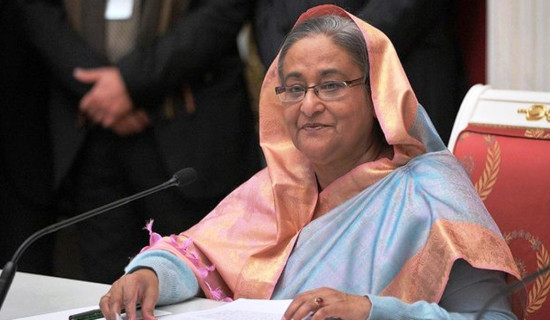- Thursday, 3 July 2025
Films based on literary works fail to lure audience
by Santosh Subedi,Kaski, July 3: Making films based on literary works has been popular in the West since long. But, in Nepal, only a negligible number of films based on literary works are produced, and many of them have failed to meet the expectations of audience.
In Hollywood, films based on literary works like Gone with the Wind, The Bridges of Madison County, Cain and Abel and the James Bond series have been hits.
Similarly, films based on literary works by writers like Munshi Premchand, Sarat Chandra, and others have been made in India.
In the early days of Nepali cinema, a few films based on literary works were somewhat successful, but many were unsuccessful. Films based on literary works have not been able to attract much audience attention.
In Nepal, director Prem Bahadur Basnet directed the film Kumari based on the novel Kumari Shobha by writer Bijaya Malla.
Released in 1977, it was not only the first colour Nepali film but also the first Nepali film based on a literary work.
Paral Ko Aago was made based on the literary work Naso by Guru Prasad Mainali. The film was directed by Pratab Subba.
Other films, such as Prem Pinda based on the immortal work by Balkrishna Sama, Basanti based on the work of Diamond Shumsher Rana, and Basudev based on the work of Dhurva Chandra Gautam, have also been made and were successful commercially.
Lobhi Papi based on Basu Shashi’s Nagdanarayan and Basai, based on Sapanaharuko Desh by Modnath Prashrit, failed to achieve commercial success but received some attention.
Muna Madan, based on the literary work of the great poet Laxmi Prasad Devkota, was a hit.
The film was directed by Gyanendra Deuja.
Along with Muna Madan, the book Jhola by Krishna Dharabasi was also made into a successful film. The film Jhola portrayed the practice of the ‘Sati’ tradition in Nepal and was successful not only in Nepali cinema but also achieved recognition at the Oscars.
The autobiographical work Pal by Karna Shakya was made into a film but failed commercially.
The film Masan, produced by Neer Shah based on the work by Gopal Prasad Rimal, was also unsuccessful. The writer had presented his work psychologically, but Neer Shah turned Masan into a comedy, which led to its failure and caused serious damage to the original work.
Similarly, Seto Bagha was also unsuccessful. The film Shirishko Phool, based on the novel by Madan Puraskar-winning writer Parijat, also ended up on the list of unsuccessful films.
Why were they unsuccessful?
Films based on literary works have not been free from controversy.
Filmmakers, directors, and actors have been accused of not realistically bringing the works to the screen.
Director Ghanshyam Lamichhane argues that films based on literary works have failed because they were not handled by skilled directors.
He said, “Just because a film is based on a literary work doesn’t mean you can just do whatever you want. Neither does it do justice to the work nor attract the audience.”
He analyses that while films like Basudev, Basnati, Muna Madan, Prem Pinda, and Basai were good, the films made after those did not meet expectations. The lack of filmmaking as envisioned by the authors has led to the failure of films based on literary works.
Film director and critic Dipendra Lama also analyses that the failure of films based on literary works comes from the lack of filmmaking that aligns with the writer’s vision.
“It is natural to exaggerate the story from a literary work. You cannot make a film exactly according to the novel because of technology and budget constraints.
Many commercial films have also failed due to the inability to connect with the audience, not just films based on literary works,” he added.







copy-square-thumb.jpg)
-square-thumb.jpg)







